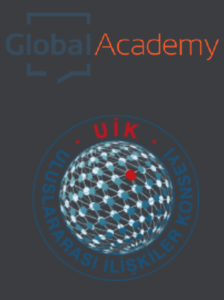Okuma Süresi: 4 dk.
Menu
- HakkındaAbout
- YayınlarPublications
- İşitsel-GörselAudio-Visual
- DiğerMiscellaneous
- KategorilerCategories
- BölgelerRegions
- KonularIssues
- Cumhuriyetin 100 Yılı
100 Years of the Republic - Ukrayna Krizi
Crisis in Ukraine - COVID-19 ve UİCOVID-19 and IR
- Dış Politika ve DiplomasiForeign Policy And Diplomacy
- Enerji-Çevre-KaynaklarEnergy-Environment-Resources
- Güvenlik-Strateji-JeopolitikSecurity-Strategy-Geopolitics
- Tarih-Siyaset-SosyolojiHistory-Politics-Sociology
- Teori Ve YöntemTheory And Method
- Uluslararası Hukuk ve ÖrgütlerInternational Law And Organizations
- Uluslararası PolitikaInternational Politics
- Sanat – Kültür – Yaşam
- Cumhuriyetin 100 Yılı



